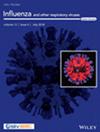Assessment of Influenza Severity in Bhutan by Using WHO Framework Pandemic Influenza Severity Assessment (PISA): An Implementation Research Study
Abstract
Background
Influenza presents a significant global health challenge, with seasonal epidemics causing 3 to 5 million cases of severe illness and 290,000 to 650,000 respiratory deaths annually. In Bhutan, the highest rates of influenza-associated hospitalizations were observed among children under 5 years of age emphasizing the need for robust surveillance and preparedness.
Objective
This study aims to assess influenza severity in Bhutan using the World Health Organization's (WHO) Pandemic Influenza Severity Assessment (PISA) framework. By integrating syndromic and influenza-specific data, we establish national-level baseline and threshold values for influenza activity.
Methods
The WHO Average Curve Method was employed to establish seasonal and intensity thresholds, categorizing influenza severity based on historical data from 2016 to 2019 and 2023.
Results
Analysis of influenza activity revealed near-continuous activity with two annual peaks. Thresholds for epidemic, moderate, high, and extraordinary levels of transmissibility and morbidity were determined. The 2019 season exhibited the highest transmissibility and morbidity, with significant variability in intensity across different seasons.
Conclusion
The study demonstrates the effectiveness of the PISA framework in assessing influenza severity in Bhutan. The established thresholds provide a valuable tool for public health decision-making, enhancing the country's preparedness for both seasonal and pandemic influenza. These findings underscore the importance of maintaining and adapting surveillance systems to monitor influenza activity year-round.


 求助内容:
求助内容: 应助结果提醒方式:
应助结果提醒方式:


